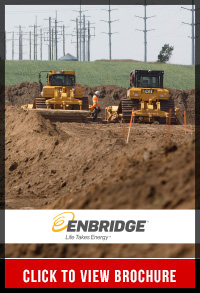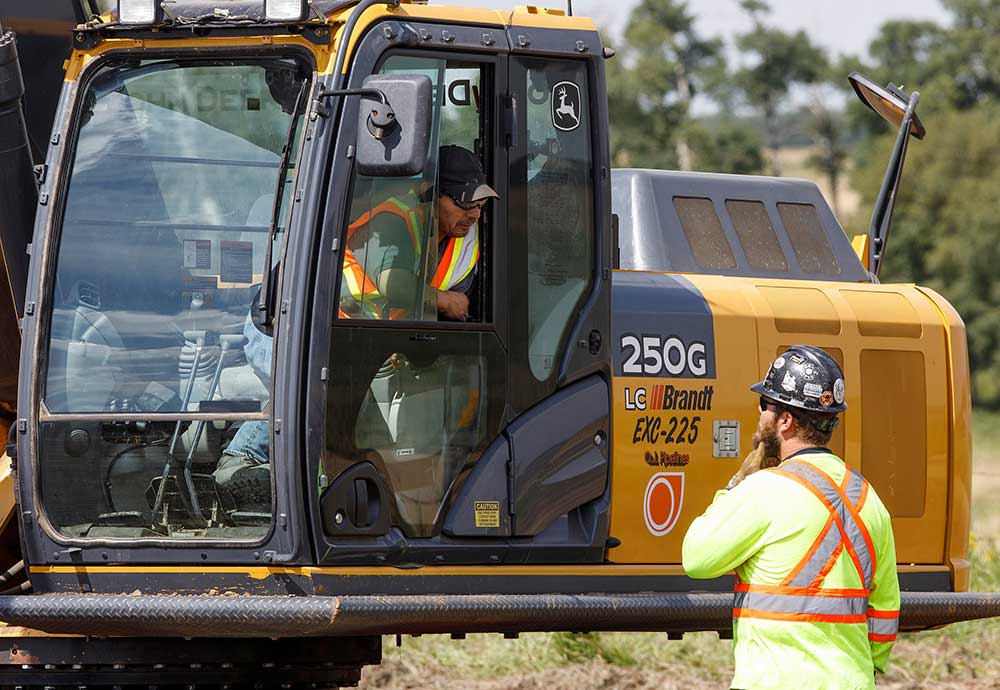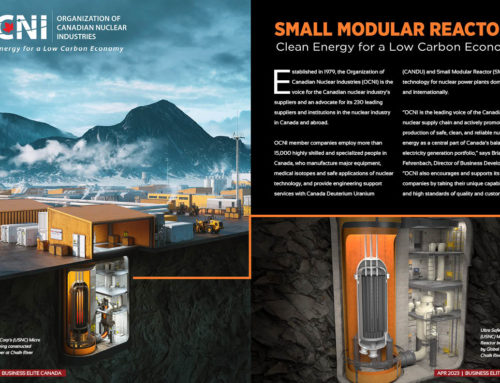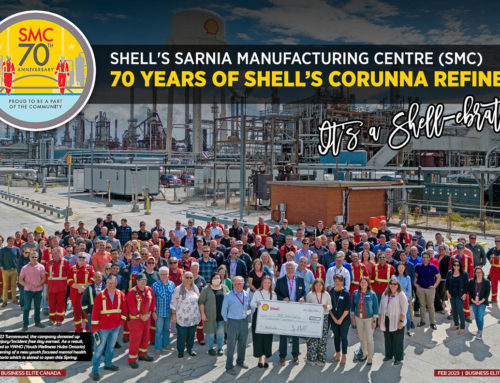By Anna Guy
The largest project in Enbridge history, the L3RP will maintain the highest safety and environmental standards, reduce future maintenance activities and ensure the reliable supply of western Canadian crude oil to the Chicago, U.S. Gulf Coast, eastern U.S. and Canadian refinery markets.
 In early August of this year, Alberta Premier Rachel Notley, with dozens of 36inch steel pipes in the background, delivered a speech which illustrated the importance of energy infrastructure projects to this country.
In early August of this year, Alberta Premier Rachel Notley, with dozens of 36inch steel pipes in the background, delivered a speech which illustrated the importance of energy infrastructure projects to this country.
“There is not a school, there is not a hospital, there is not a road a bus or a public bike lane anywhere in this country that does not owe something to the strength of the Alberta energy industry.”
Notley continued, “This is a win. This is a win for working people, this is a win for Alberta, this is a win for a whole bunch of prairie communities and it is a win for all Canadians.”
The “win” Notley is referring to? Getting Alberta’s economy back to strength with a strong national environmental policy. Getting out of coal by 2030. Getting the chance to sell to China at better prices.
All of these hopes are tied to the Enbridge’s Line 3 Pipeline—1,600 km pipeline that will run from Hardisty, Alberta, through Saskatchewan, down into the U.S. and ending in Superior Wisconsin—which broke ground that month.
Largest capital project in company history
Enbridge announced the launch of construction in Canada on Aug. 3 and it is now underway in Alberta, Saskatchewan and Wisconsin. L3RP represents the largest capital project in Enbridge history and has benefited from the most extensive engagement program ever undertaken by the company.
The Line 3 project replaces a critical piece of energy infrastructure that provides safe, reliable, and cost-effective supply of energy for North Americans. The $5.3-billion Enbridge project is to replace the original 1968 Canadian pipeline, with the U.S. part of the project costing $2.9-million. The project is estimated to be completed in 2019 and will effectively double its capacity to 760,000 barrels a day.
Given the difficulty’s Alberta has faced recently due to the collapse in commodity prices, the project’s timing is especially auspicious. It will also bring many welcome jobs back to the area. It’s expected to produce 24,493 temporary full-time equivalent positions in Canada, and 9,200 direct and indirect jobs will be created by the project in Alberta alone.
“Responsible Energy Development”
Along with the Alberta government, Enbridge are committed to being a global leader in environmentally responsible energy development. While pipeline projects generally are not without their opponents, this project has taken the major objectives seriously, and have come up with a plan that will minimize the environmental impact in what is a very forward-thinking approach.
“We are proud that the resources that flow through Line 3 come from the most responsible, forward-looking energy jurisdiction in North America–and arguably the world,” says Notley. “Line 3 is about good jobs, growing Alberta’s and Canada’s economy and ensuring we have safe, modern infrastructure to transport our energy resources to market while protecting the environment.”
Energy Minister Marg McCuaig-Boyd echoes this sentiment. “We’re world leaders in energy innovation and environmental stewardship and modernizing this key piece of infrastructure will help to protect Alberta’s environment, enhance the safety of this pipeline and ensure the province’s resources get to market.”
Community Engagement
The Line 3 Replacement Pipeline is the most extensive engagement program in Enbridge history. Across the Canadian project, more than $3 million to be invested in community-focused initiatives in 2017 and 2018, including recent announcement of $100,000 to the Town of Provost for campground upgrades, playground upgrades, laptops and literacy programs for kids.
Engagement with Indigenous communities was also a major priority. Enbridge reached out to approximately 150 Indigenous communities, and 1,000 in-person meetings with Chief and Councils, Elders and other community members.
“We’re very proud of the extensive and supportive engagement with communities and indigenous groups along the right of way,” says Al Monaco, Enbridge President and CEO. “We focused on early and collaborative discussions, listened to input, and made changes to address people’s concerns while ensuring that communities and our indigenous partners benefit through jobs and procurement opportunities. The engagement we’ve had with communities has made this project even better.”
For more information on the Line 3 Replacement Project, please visit www.enbridge.com






